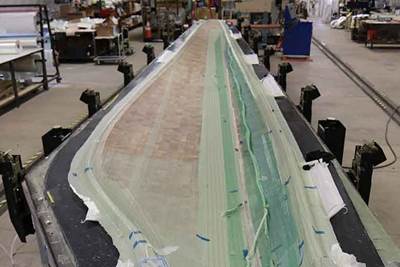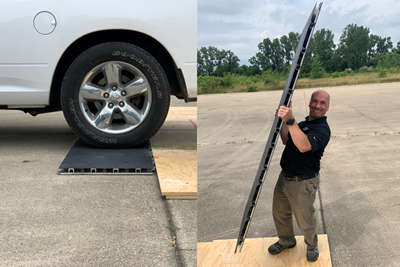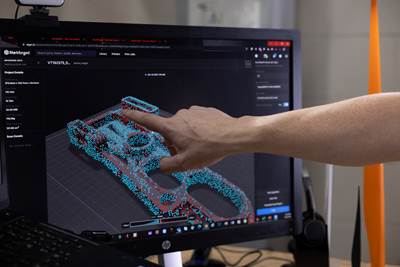DOE funds project for 3D-printed wind blade tooling
Targeting U.S. wind energy, the program backs Purdue’s CMSC center and industry partners to develop the foundation for automated tooling manufacture, supporting new innovations in composite materials, other technology elements.
Share
The U.S. Department of Energy (DOE) has announced an award of $2,849,000 to the Composites Manufacturing Simulation Center (CMSC) of Purdue University (West Lafayette, Ind., U.S.) and its industry partners, Thermwood Inc. (Dale, Ind., U.S.), TPI Composites Inc. (Scottsdale, Ariz., U.S.), Dassault Systèmes (Waltham, Mass., U.S.), Dimensional Innovations (Overland Park, Kan., U.S.) and Techmer PM (Clinton, Tenn., U.S.).
The DOE-funded Purdue program, “Additive Manufacturing of Modular Tools with Integrated Heating for Large-Scale Wind Blade Manufacturing,” is led by Eduardo Barocio, director of the Composites Additive Manufacturing and Simulation (CAMS) Industrial Consortium.
“The primary goal of the program is to develop the foundation for automation in manufacturing of tooling for large-scale wind blades that can accommodate continuous changes in blade geometry and scale,” Barocio says. “This will be accomplished through modular construction, wherein modules are 3D printed with carbon fiber-reinforced thermoplastic composites by a technology called extrusion deposition additive manufacturing, which was first developed at the DOE’s Manufacturing Demonstration Facility in the Oak Ridge National Laboratory [ORNL].”
Specific targets for the program include developing a module design for wind blades equal to or greater in length than 80 meters; reducing the time required to manufacture and assemble wind blade tooling by at least 40% over conventional tool manufacture; enhancing tool performance by at least 15%; effecting weight reductions by a minimum of 25% over conventional tools; and lowering the manufacturing cost of a wind blade tool by at least 35%.
The Purdue Thermwood LSAM laboratory provides the scientific underpinnings to mature the large-scale additive manufacturing industry. Photo Credit: Purdue University
Barocio is founder and director of the Thermwood Large-Scale Additive Manufacturing (LSAM) Research Lab at the Indiana Manufacturing Institute in Purdue Research Park. He is also founding director of the Composites Additive Manufacturing and Simulation Industrial Consortium, whose mission is to shape the future of LSAM by providing education, simulation tools, characterization and best practices.
“The proposed program provides the foundation for automated manufacturing technology in wind blade tooling manufacture,” Barocio adds. “These same technologies can be applied to manufacturing of all the elements of the wind energy system and, as such, the program provides a pioneering development that can leverage technology within the United States for a major source of clean energy, wind.”
The DOE projects were picked for their potential to bolster the manufacturability and robustness of composite materials.
The program will develop and demonstrate seven specific innovations. These include automating the 3D printing of large-scale modules and developing robust joining technology and inline heating elements deposition for conduction heating. Others include 3D printed cooling channels for convective cooling; new composite materials systems for economy and performance; support frame weight reduction; and tool deformation prediction and control, with decision-making by a digital twin for 3D printing design and manufacturing.
Overall, the DOE awarded $30 million for 13 projects across 10 states that will reshape the design, materials and sustainability of large wind blades for offshore and land-based applications. Large wind blades face significant challenges in design and materials, particularly for offshore applications. The selected projects will tackle these challenges, focusing on sustainability, efficiency and technological advancements to make wind energy more viable and effective.
Importantly, the DOE projects were picked for their potential to bolster the manufacturability and robustness of composite materials, which are essential to the future success of wind energy technologies. The projects focus on three primary challenges: large wind blade additive manufacturing (AM), AM of wind turbine components and advanced manufacturing, materials and sustainability for large wind blades.
“These projects, alongside the Purdue program, will address the remaining challenges in wind turbine manufacturing and build on previous work in automation, digitalization, wind blade sustainability and modular blade construction and joining,” R. Byron Pipes, executive director of the Composites Manufacturing Simulation Center at Purdue, says. “Successful demonstration of automation in the manufacture of alternate energy systems can enhance their wider use while sustaining the industry in the U.S.”
Related Content
Price, performance, protection: EV battery enclosures, Part 1
Composite technologies are growing in use as suppliers continue efforts to meet more demanding requirements for EV battery enclosures.
Read MorePEEK vs. PEKK vs. PAEK and continuous compression molding
Suppliers of thermoplastics and carbon fiber chime in regarding PEEK vs. PEKK, and now PAEK, as well as in-situ consolidation — the supply chain for thermoplastic tape composites continues to evolve.
Read MoreSulapac introduces Sulapac Flow 1.7 to replace PLA, ABS and PP in FDM, FGF
Available as filament and granules for extrusion, new wood composite matches properties yet is compostable, eliminates microplastics and reduces carbon footprint.
Read MorePlant tour: Albany Engineered Composites, Rochester, N.H., U.S.
Efficient, high-quality, well-controlled composites manufacturing at volume is the mantra for this 3D weaving specialist.
Read MoreRead Next
NREL explores novel manufacturing approach for next-generation wind turbine blades
3D printing of thermoplastic blades enables thermal welding and improves recyclability, offering the potential to reduce turbine blade weight and cost by at least 10%, and production cycle time by 15%.
Read MorePurdue researchers develop new type of intelligent architected materials
Phase transforming cellular materials (PXCM) exhibit intelligent responses to external forces and stimuli, can dissipate energy to avoid damage and are being developed for transportation, military and other applications that can use composites.
Read MoreVestas implements composites 3D printing to increase efficiency for blade alignment tools
A Markforged digital repository and multi-material 3D printers enable faster, more accurate and less costly manufacture of a variety of tools and blade components across Vestas sites.
Read More

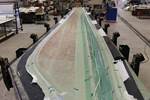
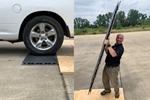
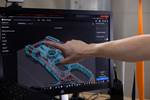
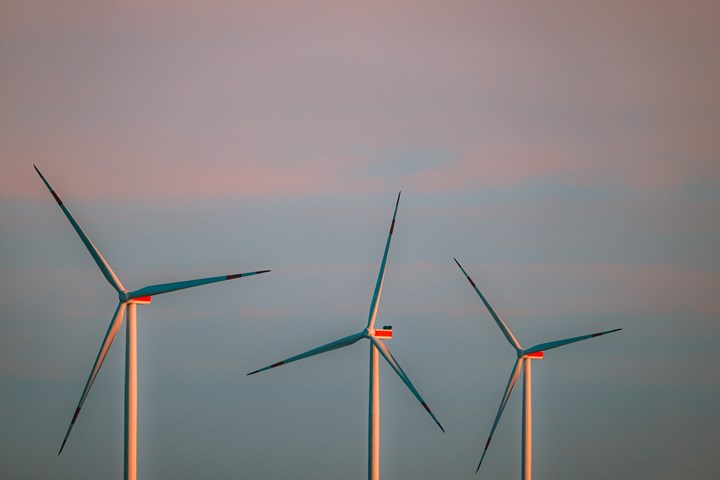



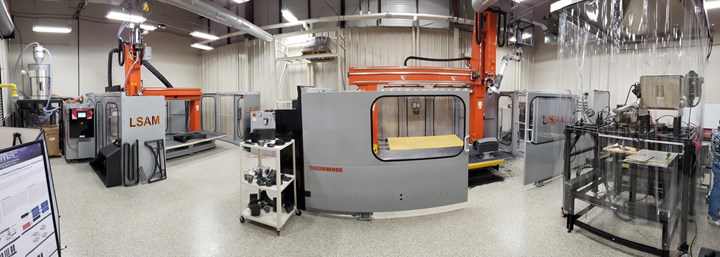




.jpg;maxWidth=300;quality=90)










